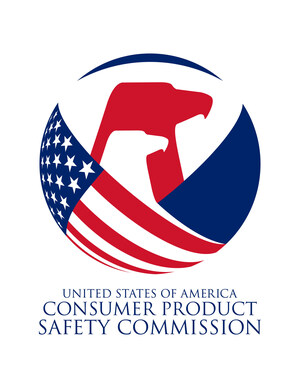WASHINGTON, Nov. 8, 2016 /PRNewswire-USNewswire/ -- CPSC port investigators, in partnership with the port staff at U.S. Customs and Border Protection, are screening and stopping dangerous and violative products at U.S. ports from coast to coast. In all, from October 1, 2014 through September 30, 2015, more than 10.5 million products that violated U.S. safety rules were prevented from reaching the hands of U.S. consumers, a 123% increase from the previous year.
CPSC is also working to enhance its port surveillance technology that targets shipments of consumer products from other countries.
CPSC Import Stoppage for FY 2015 (Oct. 1, 2014 through Sept. 30, 2015*)
*The most recent year for which full year data is available.
- About 35,000 different imported consumer product shipments were screened and checked to determine whether they met federal standards or presented a hazard to consumers, a 25% increase from the previous year. When products are found to be potentially non-compliant during screening, they are sampled for further lab testing and detained at the port.
- Investigators found about 2,600 shipments containing products that were in violation and posed a threat to consumers, a 63% increase from the previous year. Manufacturers are given a chance to correct these products to comply with federal requirements. If they can't correct them or refuse to do so, the products are not allowed into the U.S.
- About 2,300 of the 2,600 product shipments stopped were children's products totaling more than seven million individual products, an increase of 75% from the previous year. The agency's Risk Assessment Methodology (RAM) technology allows CPSC to better identify shipments that may have dangerous or violative products, so examinations at the port are focused on keeping unsafe toys and other children's products out of kids' hands.
- Shipments from 36 countries were found to contain violative products. About 85% of the violative shipments came from China.
Risk Assessment Methodology (RAM) 2.0 Allows for Greater Flexibility
CPSC is in the process of transitioning from the original pilot RAM system, developed in 2011, to a 2.0 version that provides CPSC staff greater flexibility and positions the system for future development. RAM allows CPSC investigators to analyze data from U.S. Customs and Border Protection (CBP) about shipments of consumer products arriving at U.S. ports of entry, then make risk-based decisions about which shipments to inspect. It also allows CPSC to recognize low-risk cargo to prevent it from being unnecessarily slowed down as it makes its way through the ports.
eFiling Alpha Pilot Launched in July 2016 Aims to Enhance Import Targeting
In July 2016, CPSC successfully launched the eFiling Alpha Pilot with eight volunteer companies to collect data to enhance import targeting. The pilot focuses on testing the capability of importers to electronically file targeting/enforcement data through U.S. Customs and Border Protection (CBP) and for CPSC to receive and review that data. A critical component of the test involves understanding and comparing the levels of effort and resources required when prefiling data in the eFiling Product Registry versus filing all data with CBP at time of entry. The pilot is expected to run through December 2016.
For additional information and port surveillance news, visit the Import Safety page on CPSC's website or view a previous blog post. You can also view a list of products that were found in violation of safety requirements.
Logo - http://photos.prnewswire.com/prnh/20030904/USCSCLOGO
SOURCE U.S. Consumer Product Safety Commission
Related Links
WANT YOUR COMPANY'S NEWS FEATURED ON PRNEWSWIRE.COM?
Newsrooms &
Influencers
Digital Media
Outlets
Journalists
Opted In




Share this article